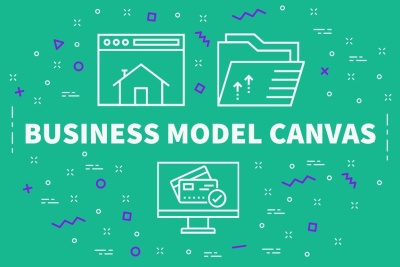Business Model Canvas is a tool that was designed by Alexander Osterwalder and Yves Pigneur. This highly effective tool was designed to help businesses understand the value of their organization. When used properly, it can be extremely powerful. In this article, we will discuss, in detail, what the Business Model Canvas is, how it can be used, and the benefits that it can provide.
Business Model Canvas is a graphic representation of a variety of variables that highlight the values within an organization. This model can be used as a strategy tool for
- the creation of a new business.
- It can also be used to analyze the current state of an existing business.
Developed by Swiss business expert Alexander Osterwalder and Management Information Systems professor Yves Pigneur, the Business Model Canvas is intended to help new and existing businesses determine what benefits they offer so that they can determine if they are on the right track to attaining their goals.
Categories within the Business Model Canvas
The Business Model Canvas highlights the nine building blocks of a company. These building blocks include:
- Key partners
- Key activities
- Key resources
- Value propositions
- Customer relationships
- Channels
- Customer segments
- Cost structure
- Revenue streams
By assessing the developments that are occurring within each category, a business is able to
- improve its value propositions
- and improve its overall strategy.
In other words, this model can help businesses make clear decisions regarding their future.
Business Model Canvas Explained - 9 Building Blocks
In this section, we will explain each of the 9 building blocks that make up the Business Model Canvas.
- Key partners. For both existing businesses and start ups, it can be extremely important to create alliances with partners; for example, it can be highly beneficial when trying to beat the competition. By identifying key partners, businesses can gain vital information about these partners and know which ones constitute a valuable relationship.
- Key activities. By having an in-depth understanding of the core activities of a company, a better understanding of the value proposition of the business will be understood. It isn’t just about production; it is also about taking an approach to problem solving, networking, and the quality of the products and/or services that a company offers. When a business understands what the value for their customers is, they can develop a better relationship with their existing customers. They might also be able to make better relationships with prospective customers.
- Key resources. Resources refers to the means that a company should be performing. They can be categorized as intellectual, physical, financial, and even human resources. Physical resources can include certain physical assets, such as equipment that the businesses uses. Conversely, intellectual resources refers to things that the business attains, such as brands, knowledge and patents, that do not have a physical presence. Lastly, financial resources refer to the flow of funds and the sources of income that the company has access to.
- Value propositions. This refers to a company’s right to exist; the manner in which it is meeting the needs of the customer. It involves determining how a company distinguishes itself from the competition. This distinction focuses on things like price, speed, accuracy, delivery, and service. It also focuses on things like design, the status of a brand, and the experiences and satisfaction of the customers.
- Customer relationships. This is an essential component of any business, as customers are what sustains a business. As such, it is important for an organization to interact with and develop relationships with their customers. By understanding the needs of the customers, an organization can ensure that they make efforts that will allow them to meet those needs.
- Channels. This refers to distribution, communications and sales channels. Each of these channels offers particular value for a business and is inherently important. Having a firm understanding of how these channels work an whether or not they are meeting specific needs will ensure that a business is achieving its goals.
- Customer segments. For businesses that services more than one group of people, it is necessary to divide those groups into different customer segments. By determining the specific needs and requirements of each group and what value is attached to each group, a company can offer products and services that are better feared to the needs and requirements of each group of customers.
- Cost structure. By understanding cost structure, a business will be able to determine what the minimum turnover can be in order to make a profit. The cost structure considers economies of scale, profit advantages, as well as constant and variable costs. Costs have to be adjusted in order to profit, and understanding how those costs can be adjusted will ensure that a business is staying on top.
- Revenue streams. Revenue streams offer real insight into the specific revenue model of a business. For instance, it can tell the business how many customers they need on a yearly basis in order to make a profit. They can also find out how much revenue they need to break even. Revenue streams drive cost, and they are exceedingly important
